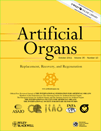Teicoplanin Pharmacokinetics During Albumin Dialysis
Present address: Gerda Falkensammer, Medical Laboratory, Wels, Austria.
Abstract
Teicoplanin (TP) pharmacokinetics was assessed in a critically ill patient during albumin dialysis (AD), which was performed with the molecular adsorbent recirculating system. After a 1200-mg loading dose (24 mg/kg), doses of 1200 and 1000 mg (20 mg/kg) on day 2 and 3, respectively, were administered during two cycles of AD. The mean TP peak and trough concentrations amounted to 99.3 and 21.4 µg/mL, respectively, during AD. A mean half-life of 5.5 h, an apparent volume of distribution of 0.302 L/kg, and a mean total TP clearance of 39 mL/h/kg were calculated. Ninety minutes after the start of AD, the extracorporeal clearance was 3560 mL/h. Within 8 h of AD therapy, the serum concentrations decreased by about 75%. Despite a considerable elimination of TP by AD, therapeutic serum levels could be maintained during the entire treatment by administration of high doses and close monitoring of TP serum concentrations.




